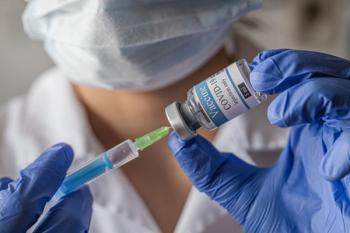
Olaparib Receives FDA Approval as First-Line Maintenance Treatment for HRD-Positive Advanced Ovarian Cancer
Ovarian cancer is the fifth most common cause of death from cancer among women in the United States, according to a press release.
The FDA has approved olaparib in combination with bevacizumab as a first-line maintenance treatment for adults with advanced epithelial ovarian, fallopian tube, or primary peritoneal cancers who saw a complete or partial response to first-line platinum-based chemotherapy and whose cancer is associated with homologous recombination deficiency (HRD)-positive status.
According to a press release, HRD-positive status is defined by either a deleterious or suspected deleterious BRCA mutation, or genomic instability. Patients will be selected for the therapy based on an FDA-approved companion diagnostic for the drug.
Ovarian cancer is the fifth most common cause of death from cancer among women in the United States, according to a press release. Women with ovarian cancer are often diagnosed with advanced disease, which has a 5-year survival rate of approximately 48%. According to the statement, BRCA1/2 mutations are found in approximately 22% of all ovarian cancers, and approximately 50% of ovarian cancers are HRD-positive.
The HRD designation includes several genetic abnormalities, including BRCA mutations. These mutations typically result in sensitivity to poly ADP ribose polymerase (PARP) inhibitors, such as olaparib.
Olaparib is the first targeted treatment to potentially exploit DNA damage response pathway deficiencies, such as BRCA mutations, in order to preferentially kill cancer cells.
A biomarker subgroup analysis of 387 patients in the phase 3 PAOLA-1 trial found that in combination with bevacizumab, olaparib reduced the risk of disease progression or death by 67% and extended progression-free survival to a median of 37.2 months compared with 17.7 months in patients who received bevacizumab alone.
Among the overall study population in the PAOLA-1 trial, the most common adverse events (AEs) included fatigue (53%), nausea (53%), anemia (41%), lymphopenia (24%), vomiting (22%), and leukopenia (18%). In the group receiving olaparib in addition to bevacizumab, additional AEs included diarrhea (18%), neutropenia (18%), urinary tract infection (15%), and headache (14%).
“Advances in understanding the role of biomarkers and PARP inhibition have fundamentally changed how physicians treat this aggressive type of cancer,” said Roy Baynes, MMed, PhD, FCP, chief medical officer of Merck Research Laboratories, in a statement. “Today’s approval based on the PAOLA-1 trial highlights the importance of HRD testing at diagnosis to identify those who may benefit from Lynparza in combination with bevacizumab as a first-line maintenance treatment.”
REFERENCE
Lynparza (olaparib) Approved by FDA as First-Line Maintenance Treatment with Bevacizumab for HRD-Positive Advanced Ovarian Cancer [news release]. Merck; May 8, 2020.
Newsletter
Stay informed on drug updates, treatment guidelines, and pharmacy practice trends—subscribe to Pharmacy Times for weekly clinical insights.
















































































































































































































